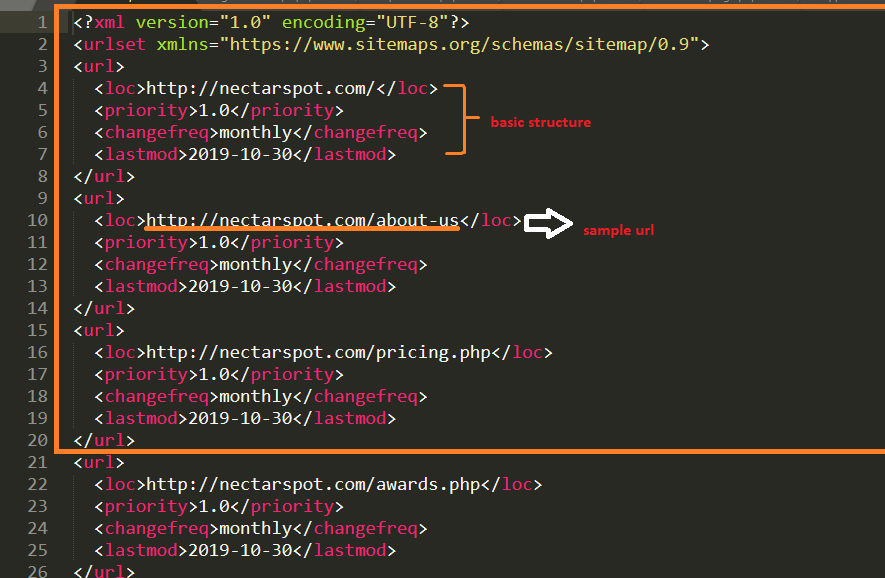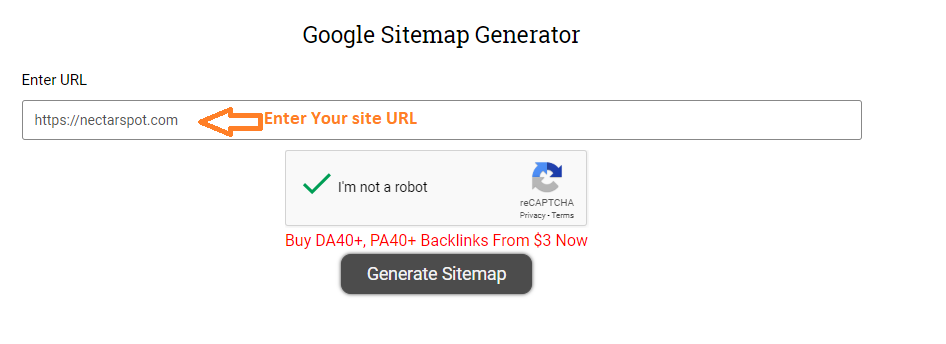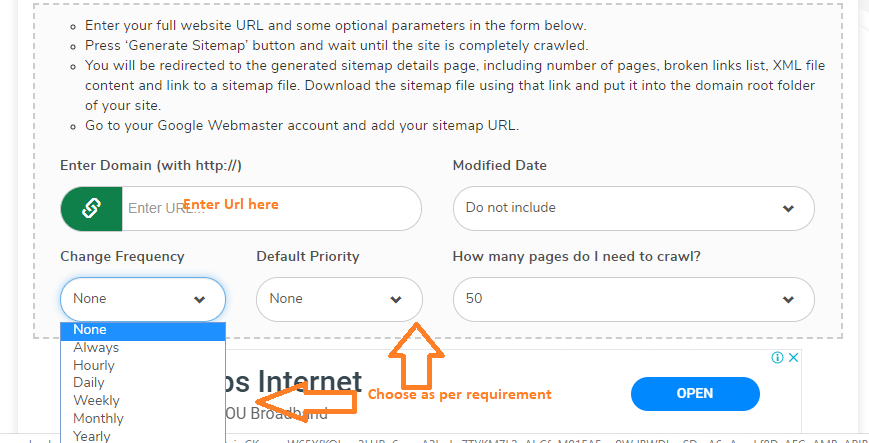
A sitemap is a file where you provide information about the pages, videos, and other files on your site, and the relationships between them. Search engines like Google read this file to more intelligently crawl your site.
Sitemaps with XML format will be easier for the browser to crawl a website.
Different Sitemap formats :
XML
RSS, mRSS , Atom1.0
Text
Google site
There are two types of audiences that are useful too - site visitors and web spiders, and there are also two types of sitemaps:
HTML sitemap - This is for visitors it helps find information on the page, and it’s usually located in the website's footer.
XML sitemap - This is for web crawlers it tells them which parts of the site should be indexed as well as the hierarchy and priority of the site content. The instructions to the sitemap are provided in robots.txt file.
When you are not sure about the directions of a particular place, the best way is to look at a certain place on the map and figure out how to get on location using the navigation.
The same applies to search robots – when they are scanning your site, they start with a sitemap. So if you want your content to be explored, crawled and indexed, it’s better to have a sitemap on your website.
Sitemap plays an important role in any website to crawl the pages and get the websites with 100% SEO. It helps you to decide or optimize which of those pages of your website needs to crawl and those are not.
You can use or upload a sitemap.xml or sitemap.html file with a list of crawl pages of your website in your server, the code for crawling pages in sitemap.xml file goes :

The primary reason to create a site map is for search engines, to make sure that all our URLs are found in search.We have three main methods to use :
Submit Your Sitemap Through Webmaster Tools.
Add Your Sitemap to Robots.txt.
Add a Link in the Footer.
Few points to make a note while building and submitting a sitemap.
Decide which pages on your site should be crawled by Google, and determine the canonical version of each page.
Decide which site-map format you want to use.
We need to use consistent, fully-qualified URLs.
A sitemap can be posted anywhere on your site, but a sitemap affects the child of the parent directory.
Don't include session IDs from URLs.
If you have multiple versions of a page for different languages or regions, tell Google about these different variations. Doing so will help Google Search point users to the most appropriate version of your page by language or region.
Sitemap files must be UTF-8 encoded.
If you have many sitemaps, you can use a sitemaps index file as a way to submit them at once.
List only Canonical URL’s.
Maintain the same URLs for both desktop and mobile versions.
If you have alternate pages for different languages or regions, you can use hreflang in either a sitemap or Html tags to indicate the alternate URLs.
Sitemap file to be UTF-8 encoded to display Non-alphanumeric and non-latin characters.

Non-alphanumeric and non-latin characters

Here is the sample XML structure that needs to be followed.

The below images is an example for XML code :

The most easier way to make the XML sitemap is done through few of the online generators.But duplicate links would arise in some cases.Most frequently used XML Site generator are as the following:
Generator - https://websiteseochecker.com/html-sitemap-generator/
Just go to the URL given above and follow the steps as described.
Give the URL that needs to get the XML site.
Wait for the result.
Download the file with XML format.


This link is one more example for online generator named XML Sitemap Generator
Generator - https://smallseotools.com/xml-sitemap-generator/

In this way, we can generate an XML report.Finally, we need to add the XML file to your server so that google can crawl those pages.

Copyright © 2024 Website by NectarSpot Inc.